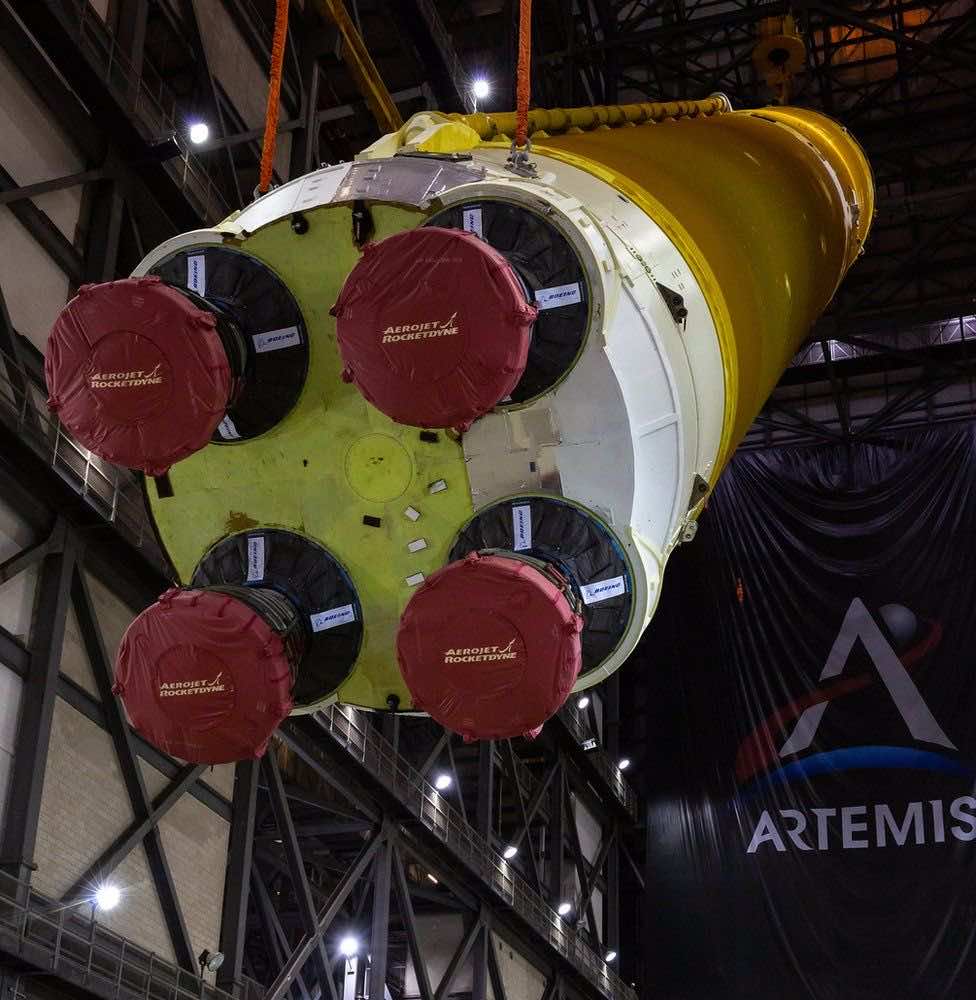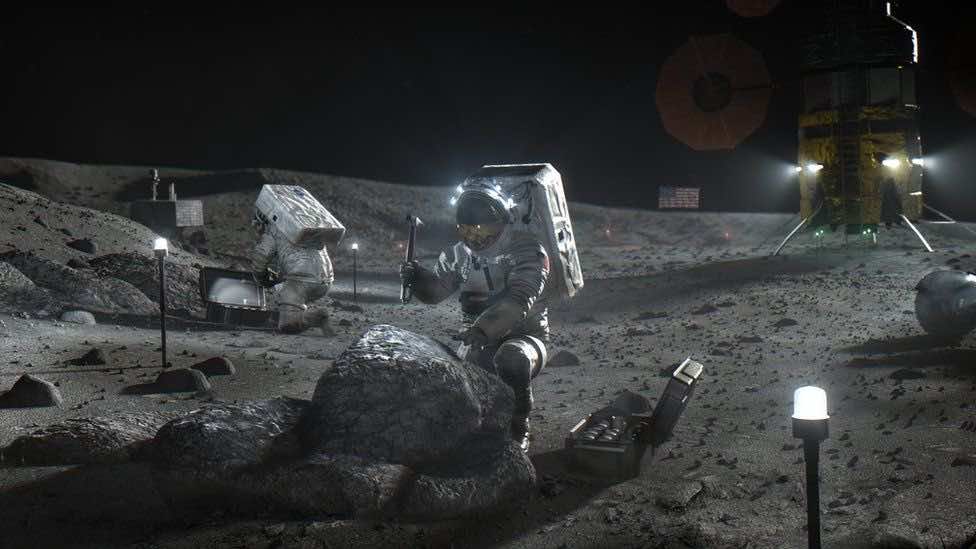NASA clears up a major hurdle to bring the astronauts back to the moon by assembling first of its Space Launch System (SLS series) rockets built to serve future space missions.
SLS is NASA’s first rocket for its Artemis-1 mission; the engineers lowered its 212-feet core stage between smaller twin booster rockets at the Kennedy Space Center in Florida on Friday. The agency’s first step towards sending astronauts into space will eventually enable humans to develop a colony on the moon.
The event marked the first time three key elements of the SLS rocket were assembled in their launch configuration. The rocket consists of a massive core stage that contains propellant tanks and four engines. The powerful engines would provide most of the thrust required to propel SLS off the surface in the first few minutes of its flight.

The core of the rocket and the Solid Rocket Boosters combined exceed the height of the statue of liberty; adding the pedestal into the equation would make it even taller. SLS weighs at around 5.75 million pounds in all its assembled glory and will produce 8.8 million pounds of thrust as it leaves the earth’s orbit.
On Friday and Saturday, the agency engineers were busy hoisting the core stage using a heavy-lift crane and then lowered the core into place between the SRBs by transferring it in a vertical position. The process allowed the NASA engineers to place the rocket on its launch bed called the mobile launcher.
The maiden test launch of the rocket is planned for later this year; however, it wouldn’t have any humans on board. The rocket would also carry America’s next-generation crew vehicle called Orion, which will have its testing done alongside.
NASA wants to ensure the safe flight of its rocket and the spaceship before they take humans on the lunar surface through the mission to space slated for 2023.
The fun begins now if you are a space exploration fan. The Artemis mission will not only take humans back to the Moon. Instead, it will also carry tech to allow humans to stay on the lunar surface to build colonies up and above. It would also allow the space exploration agencies to find out ways as to how humans can build Martian Colonies.



